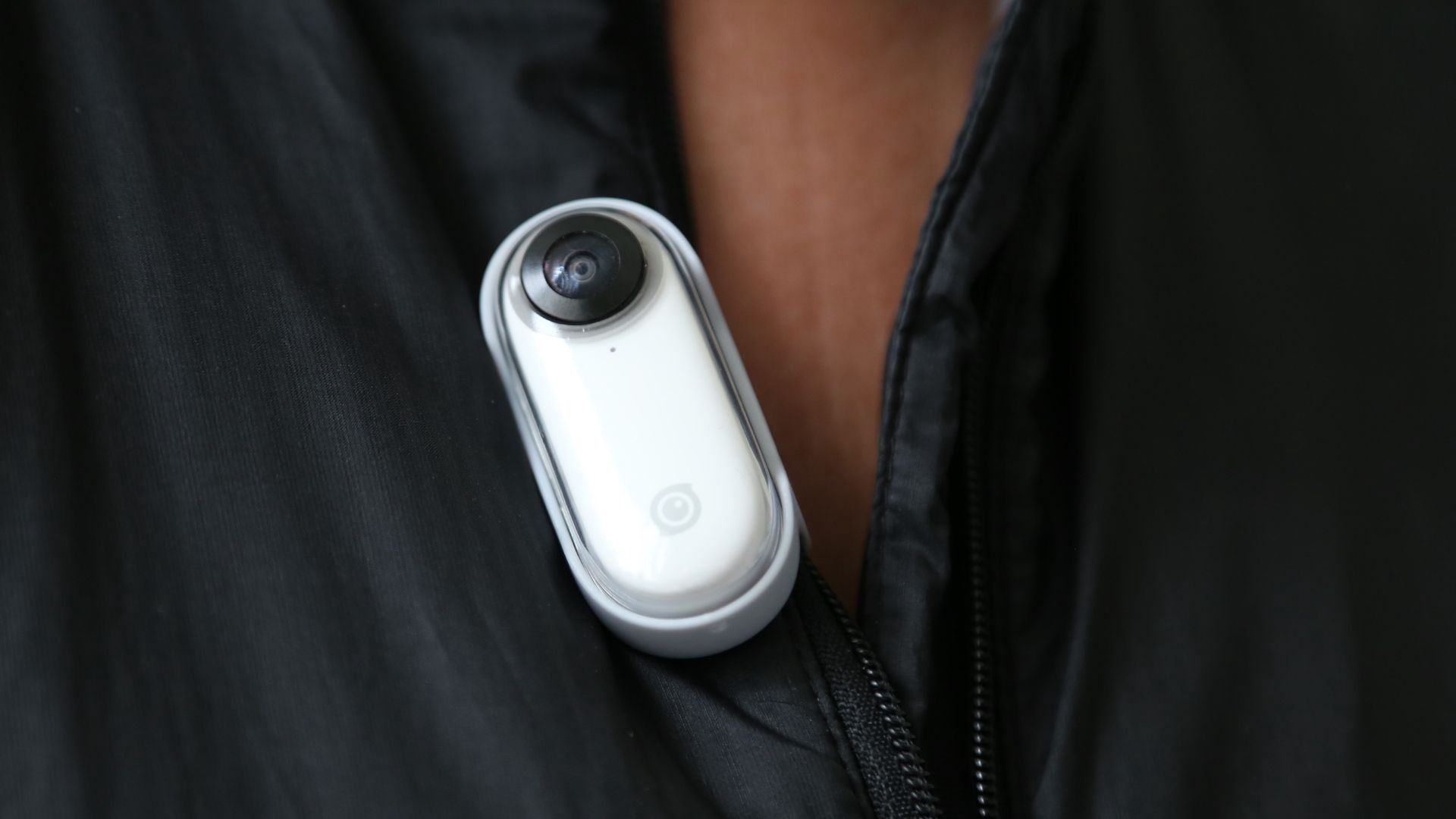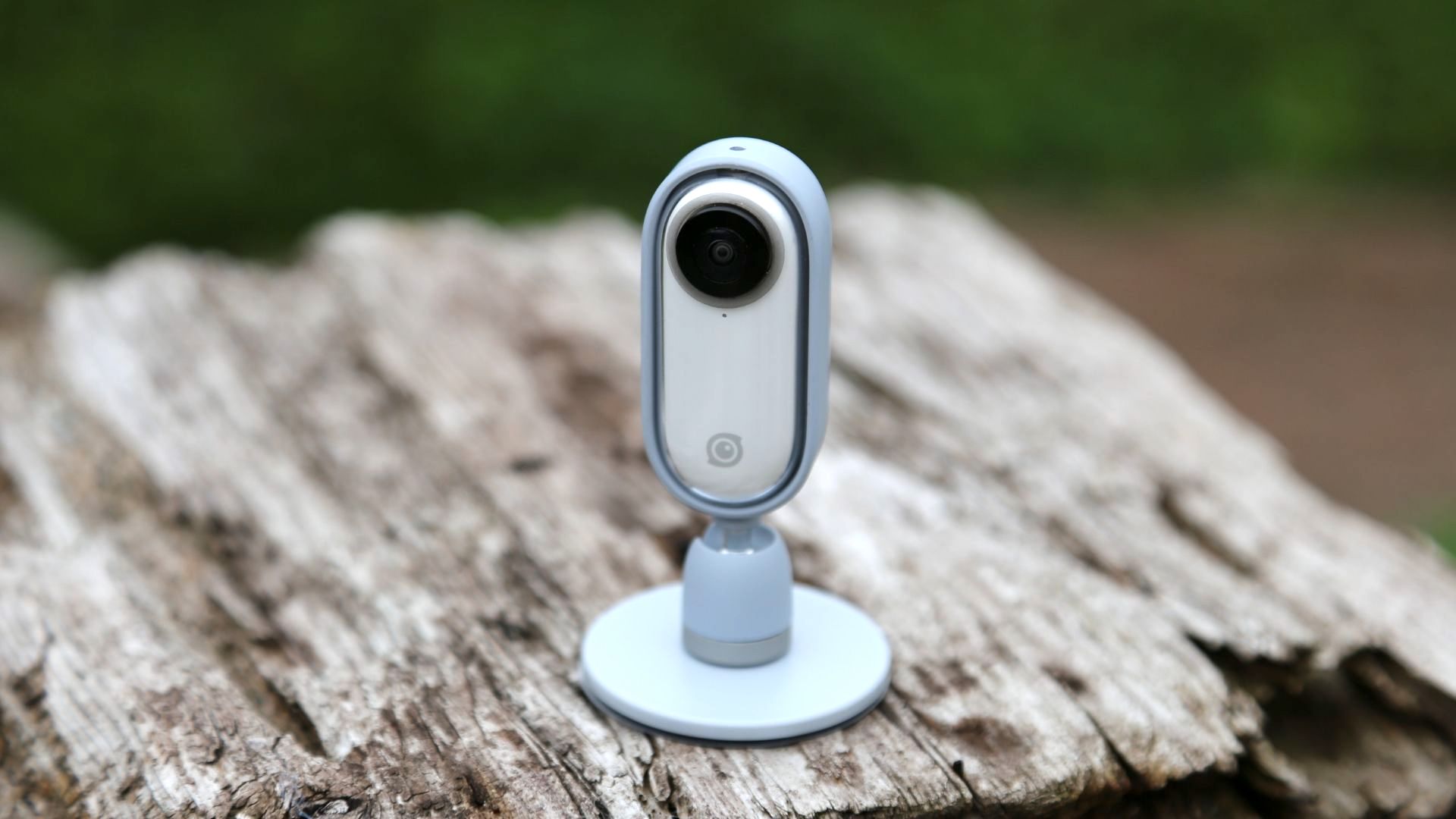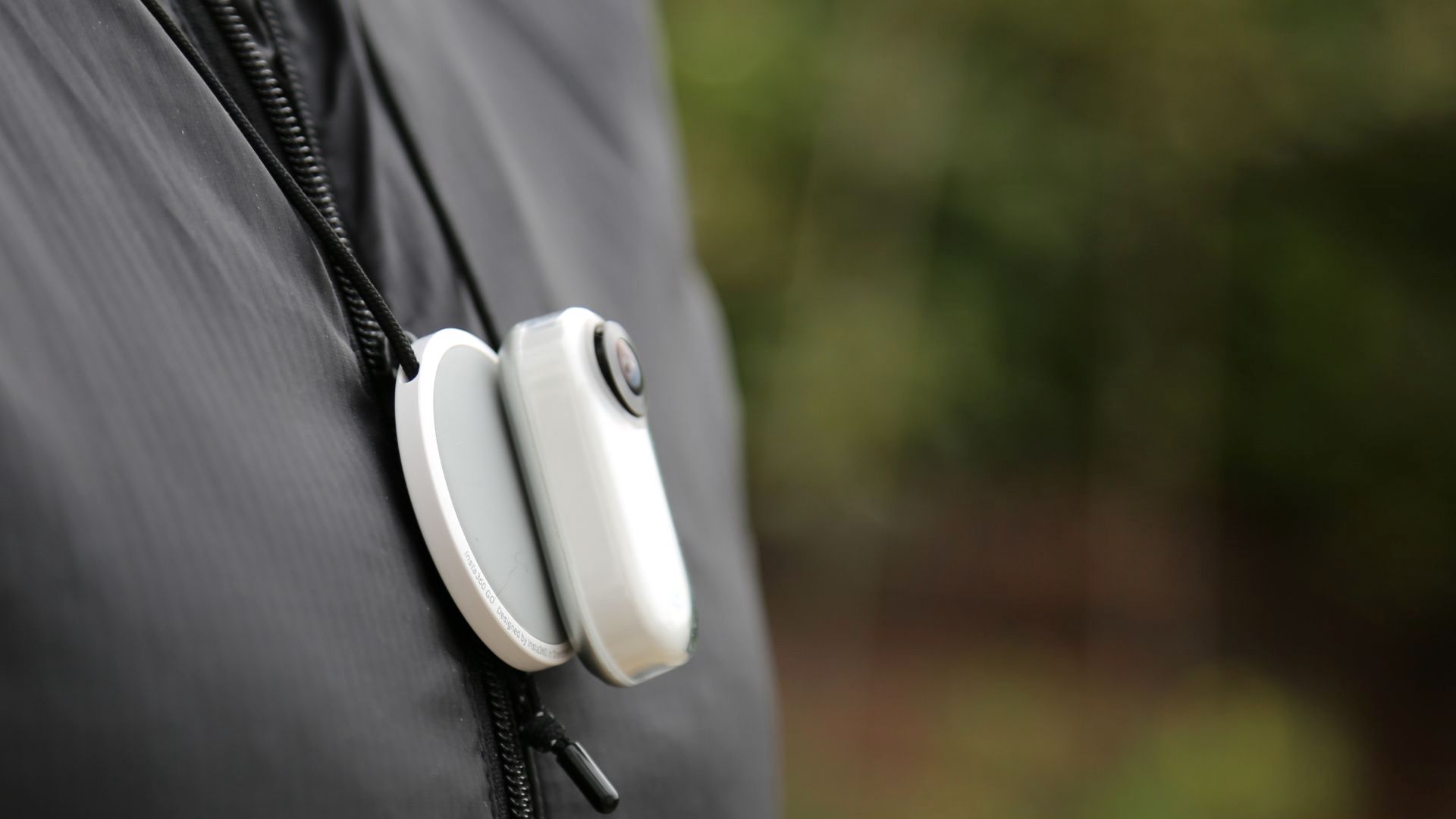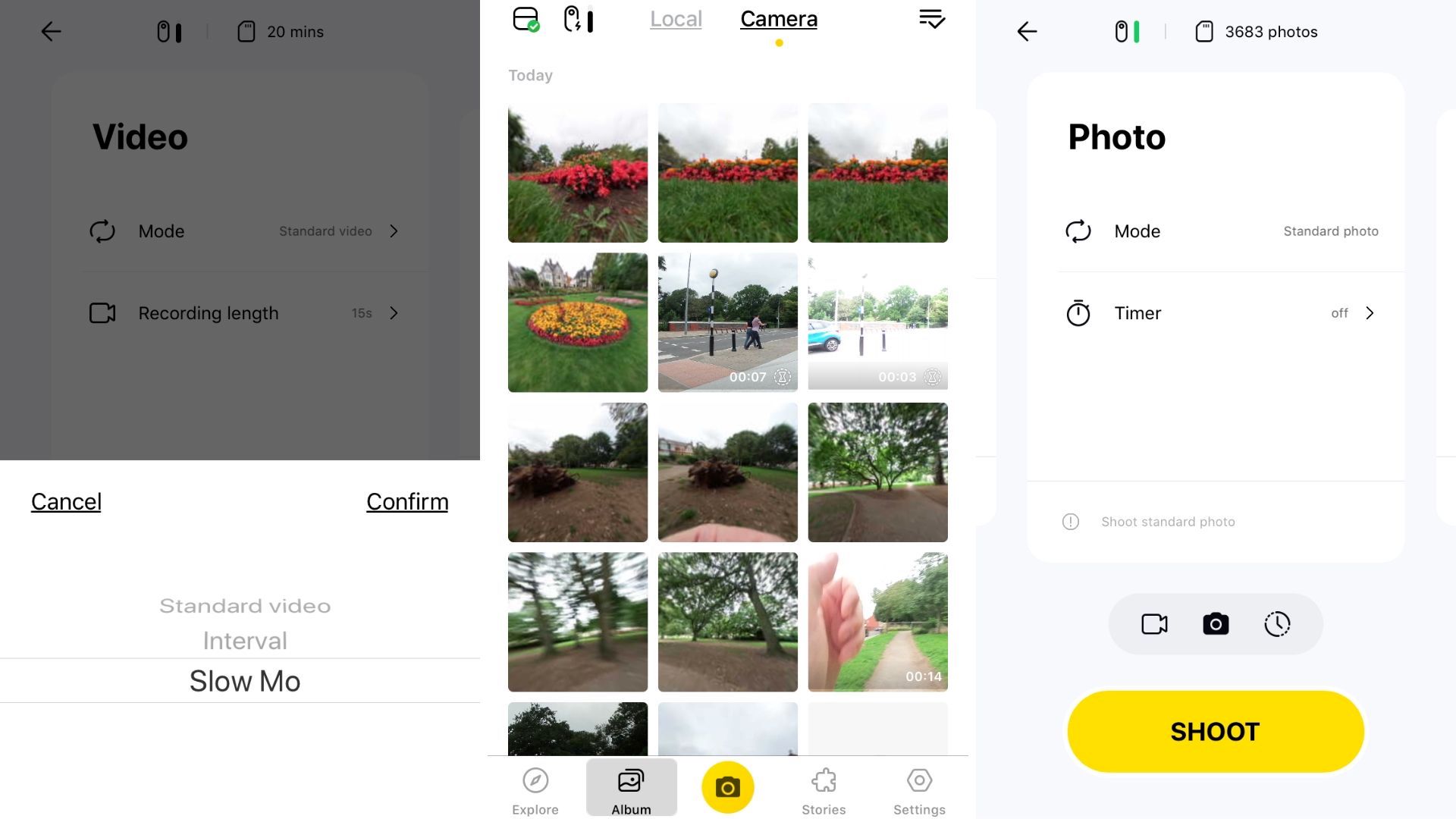Digital Camera World Verdict
A curious product that taps into the hunger for first-person video and correctly sets human attention spans to between 15 and 30 seconds, the Insta360 GO is an intriguing and easy-to-use action camera with just enough advanced features.
Pros
- +
+ Punchy video and photos
- +
+ Hyperlapse & slow-mo
- +
+ Excellent auto-editing tools
- +
+ IPX4 water-resistant
- +
+ Charge case for 2.5 charges on the go
Cons
- -
No ‘live view’
- -
Easy to drop/lose
- -
No expandable storage
- -
Placing on on/off switch
Why you can trust Digital Camera World
How long is your attention span for other people’s first-person videos of their ‘extreme sports’ adventures? Sure, the best GoPro can record for a few hours, but most such footage is trash. Cue the Insta360 GO, a tiny stick-on camera that’s based on an understanding that our collective attention span is between 15 and 30 seconds (sounds about right) and that full HD quality is fine for sharing.
Build and handling
Weighing a mere 18g – six times lighter than most action cameras – the Insta360 GO is a new attempt at what used to be called a ‘lifelogger’ camera a few years ago, albeit a slim (49x21x15 mm) and relatively high-resolution version.
GO shoots video in full HD quality, it deals in hyperlapses and timelapses, and more importantly, it’s magnetic and can be mounted anywhere. Most obviously the GO attaches to clothes, but also – thanks to an army of small mounts in the box – it can be clipped or hung on anything from a bike, surfboard or a helmet.
In the hand, the GO feels tiny, but solid. It’s built well. It’s got a f/2.2 wide-angle lens, much as you will find on any action camera. It’s ranged on the top, while the reverse contains a charging connector and the on/off switch. The latter’s placement does turn out to be slightly annoying; it might work much better on the front for easier access. The plastic cover, though undoubtedly there to offer some water resistance, felt slightly slippery in the hand. During this review the GO did ping off across the floor a few times as it slipped through fingers. However, at no time did it get close to being damaged.

GO works like this: you pin it to your clothes, switch it on, use the free app to pair via Bluetooth 4.0, then control what short videos and photos you take. Options are limited. For video, there’s standard (1080p at 25 frames per second) and slow-mo (captured in 100 fps, exported in the app as 1600x900@30fps), while recording times can be set to either 15 or 30 seconds.
For photos, the app offers standard mode only (3040x3040 pixels, though they’re trimmed to export in several aspect ratios), albeit with a second option for interval shooting anything up to 60 seconds apart. Lastly, there’s a hyperlapse mode (1080p/25fps) that’s based on anything from 30 seconds to 30 minutes of recording (the latter makes it 6x speed). Either way, the playback time of the finished hyperlapse is fixed to a maximum of five minutes (surely way over anyone’s attention spans?). All video features a 40Mbps data rate.
Performance
The main drawback of controlling GO using a phone app (you can do it manually but it’s fiddly to do when the device is attached to the user) is that there is no ‘live view’ over Bluetooth. So what you get into shot is guesswork. That’s down to a lack of battery life; giving the GO WiFi streaming would severely limit its operational time. As it stands, GO’s tiny battery is capable of recording 200 20-second video clips a day onto its 8GB built-in storage. However, it does come with a small charge case that provides an extra 2.5 charges. So that’s 500 videos a day, which ought to cover it. Each recharge takes about 20 minutes.
The best camera deals, reviews, product advice, and unmissable photography news, direct to your inbox!
As a bonus, that charge case has an Apple Lightning connector on it (a model with USB is also available for Android) so you can feed everything from the GO into a phone relatively quickly. After that, the app offers a lot of manual editing tools to trim the video, tweak playback speed, apply filters, and add stock music.

There’s an area of the app called ‘Stories’ that’s powered by Insta360’s FlashCut AI-powered software for auto-editing. In our review there just wasn't enough footage for it to work, so we can’t pass judgement on it, but it’s supposed to auto-sort video and photos into ‘life’, ‘travel’ and ‘sport’ categories. There’s also a ‘My Stories’ area to make compile a short video of a trip or event using multiple clips and photos.
The quality of the video and photos results are really impressive. The idea of shooting only for 15 seconds is a smart one, and GO’s MP4 videos benefit hugely from FlowState stabilization, a 6-axis gyroscopic stabilization that impressed on the Insta360 One X. Standard videos are smooth, and contains plenty of punchy colors, as do still photos. We did notice an audio ‘blip’ at the beginning of most videos that needed manually editing out, and a little grain in slow-mo video, though only when put on a big screen.

Accessories in the box include a magnetic pendant that hangs around the neck, a small pivot stand that could be attached to any surface, a magnetic stick base, and a clip for clothes. However, attaching the latter to clothes often means GO is angled, not straight, which drastically affects the field of view. Ditto the pendant hanging on a chest, which although magnetic does mean the GO points upwards somewhat.
Image sample gallery




Video sample gallery
Hyperlapse video shot on the Insta360 GO
Slo-mo video shot with Insta360 GO
Verdict
Boasting an excellent build quality and a simple operation, we can see the GO becoming a favorite of hyperlapse-addicts who want to create compelling content in bustling cities, down mountain biking trails and on ski runs. Just don’t bother us with anything longer than 15 seconds, thanks …
Read more:
The best helmet camera for motorcycles, cycling and adrenaline junkies
The 10 best action cameras in 2019
The best body cameras for personal security

Jamie has been writing about photography, astronomy, astro-tourism and astrophotography for over 15 years, producing content for Forbes, Space.com, Live Science, Techradar, T3, BBC Wildlife, Science Focus, Sky & Telescope, BBC Sky At Night, South China Morning Post, The Guardian, The Telegraph and Travel+Leisure.
As the editor for When Is The Next Eclipse, he has a wealth of experience, expertise and enthusiasm for astrophotography, from capturing the moon and meteor showers to solar and lunar eclipses.
He also brings a great deal of knowledge on action cameras, 360 cameras, AI cameras, camera backpacks, telescopes, gimbals, tripods and all manner of photography equipment.


